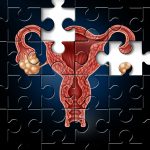Naturopathic Fertility Care: Five Common Missteps Made by Naturopathic Physicians
Docere
Khivan Oberoi, ND
The reality of infertility is upsetting on an individual level, and the statistics and projections of growth on a population basis are quite alarming. One in 8 couples and over 7.4 million women in the United States will seek assistance to grow their families.1 An estimated 1.7% of all children born in 2017 are a result of assisted reproductive technology, or in-vitro fertilization (IVF).2 The global fertility industry is grossing $25 billion per year and is expected to grow to $41 billion within the next 5 years.3
After nearly 10 years of working with this patient population, I have witnessed many individual stories and identified a certain pattern in the regrets expressed by my patients. They wish they had known their diagnosis sooner, sought treatment sooner, and explored more options earlier in their journey. But hindsight is 20/20, and for many couples the fear of knowing their diagnosis can be worse than the pain of the unknown.
I have also witnessed the variety of ways healthcare providers, across all disciplines, have failed these families. Whether it is a story of a gynecologist who delays or denies evaluation, or an alternative medical provider asking patients to spend money on unproven therapies without knowing a diagnosis, or an acupuncturist who promises pregnancy to a couple who would never be able to conceive naturally, the result is the same – a heartbroken couple not knowing which way to turn.
Naturopathic physicians are uniquely suited to addressing the complexity that is the physical and emotional reality of infertility. Our principles and our toolbox allow us to comprehensively evaluate, diagnose, and address the maladaptive physiology that blocks normal fertility. Unfortunately, a combination of patient care dynamics and individual practitioner limitations can also set up naturopathic physicians to be the very obstacles our philosophy instructs us to remove. I encourage my colleagues to understand the conventional standards of care for an infertility diagnosis. We should all be able to educate patients on the basic tests they need, including the proper methods and timing of accurate evaluation. Ideally, we are also able to order and interpret these tests for our patients and then discuss the options that are available to them so that patients feel empowered to make the best decisions possible.
In an effort to improve the quality of care that this group of patients receives from my colleagues and community, here are the most common errors I have observed during my years in practice.
#1: Skipping or Skimping on the Work-up
The conventional medicine standard of care for initial fertility testing is quite straightforward and can provide a lot of valuable insights, even if it does not always reveal an unequivocal diagnosis. I frequently meet with patients who have worked with other providers, and it is always surprising that the basic evaluation was not completed or had been ordered incorrectly.
Standard of care indicates that we should test couples in the following cases4:
- When the female partner is over the age of 30 and has been trying to conceive with appropriately timed intercourse for 12 months without a pregnancy
- When a female partner is over the age of 35 and has been trying to conceive with appropriately timed intercourse for 6 months without a pregnancy
- When a female partner is over the age of 40 and has been trying to conceive with appropriately timed intercourse for 3 months without a pregnancy
For our genetically female patients, serum testing should be done on Day 3 of the menstrual cycle (Day 1 is considered the first full day of menstrual flow). On Day 3 we can get an accurate sense of ovarian reserve and hypothalamic-ovarian communication. At a minimum, we should be ordering serum Follicle-Stimulating Hormone (FSH), Luteinizing Hormone (LH), and Estradiol. This is also a good time to evaluate other endocrine and metabolic activity, so I will often combine their Day 3 hormone labs with additional tests like Thyroid-Stimulating Hormone (TSH), Free T4, thyroid antibodies, a comprehensive metabolic panel, a lipid panel, and Anti-Müllerian Hormone (to assess ovarian reserve). If I am suspicious of polycystic ovarian syndrome, I will also order Total- & Free Testosterone and DHEA-S levels.
Transvaginal pelvic ultrasounds to screen for ovarian cysts and fibroids can be done at any time in the menstrual cycle, but assessing the Antral Follicle Count requires that the ultrasound be done in the first part of the menstrual cycle. Additional imaging tests such as a hysterosalpingogram (where dye is introduced through the cervix and X-ray images are used to track the dye pattern to confirm that the fallopian tubes are patent) or a saline-infused sonohysterogram (where saline is injected through the cervix to open up the space inside the uterus and the internal space is evaluated for occupying lesions or blockages) can be done at any time during the cycle and be very helpful to rule in or out anatomical obstacles for fertility.
For male partners, we should order serum testing for testosterone levels and a semen analysis as soon as we suggest testing for the female partner.5,6 While women are vastly more likely than men to present to a medical provider for fertility care, “male factor” infertility is involved in 66% of cases of infertility.6 Testing the male partner should not be delayed for any reason, even though few men are enthusiastic to pursue evaluation. When ordering a semen analysis, it is best to use a reproductive fertility lab. The evaluation protocols for semen analysis are not standardized from lab to lab, and much of the testing is somewhat subjective, so using a specialized lab with experienced technicians is absolutely worth it.
#2: Prescribing Testosterone Inappropriately
Given the rise in diagnosis of “Low T” and bioidentical testosterone replacement in men, it is common in my practice to diagnose iatrogenic male infertility due to exogenous testosterone use. We know that there is a negative feedback loop from testosterone levels to the hypothalamus, slowing GnRH pulse rates which then reduce pituitary output of FSH; the result is reduced spermatogenesis. A 2019 article in the World Journal of Men’s Health,titled “Testosterone Is a Contraceptive and Should Not Be Used in Men Who Desire Fertility,” presented data showing sperm counts dropping to near-zero within 4 months of initiating testosterone therapy.7 After these sperm counts decline, it can be months to years before levels return to the normal range.
The impact of testosterone replacement on fertility should be clearly defined and discussed with male patients prior to initiation, and all fertility patients need to be clearly asked about prior or current usage of testosterone therapy. There is little value gained from testing and treating female patients for infertility when the male partner may have recently used or is currently using testosterone effectively, though indirectly, as a contraceptive.
#3: Not Discussing Expectations
This is one of the more heartbreaking errors I see my fellow providers making. We have to recognize that fertility patients are among the most compliant we will ever have the opportunity to care for. They are often desperate, and this makes them vulnerable. If we are not clear about what their expectations should be, how long the timeline should be, and what we will do if those expectations are not met, we are doing these patients a great disservice.
It is important to be clear with these patients that we do not have large-scale, evidence-based studies proving that naturopathic care will guarantee them a baby. But we should also be comfortable sharing the reality that 1 round of IVF likely will not guarantee most couples a baby either.8 By being honest and transparent, we are enhancing our therapeutic relationship. While we may not be their final stop on their fertility journey, we may end up being a trusted provider for their long-term healthcare.
#4: Not Addressing Mental Health
A study of 488 American women, who filled out a standard psychological questionnaire before undergoing a stress reduction program, concluded that women with infertility felt as anxious or depressed as those diagnosed with cancer or recovering from a heart attack.9 Oftentimes, these women will present as Type A, go-getters who just need The Plan. They want steps 1-10 and believe that overcoming their fertility challenges is just about checking off boxes. They have little interest in discussing the emotional toll they are paying or the impact their infertility is having on their relationships. But they know they are struggling and we, as their providers, need to be offering support and guidance to address their mental well-being.
While our naturopathic tools, including botanicals and amino acid therapies, can be helpful in moderating the symptoms of anxiety and depression, I firmly believe that all fertility patients should be encouraged to seek counseling. Fertility challenges are deeply impactful, attacking long-held beliefs about identity, personal value, and life purpose. Getting pregnant, delivering a healthy baby, and even parenting a child may not resolve the emotional wounds caused by that infertility. Helping patients find ways to become mindful about their inner dialogue, to cope with painful and invasive treatments, and to use behavioral tools to manage the rollercoaster journey, should be at the top of the list of management strategies.
#5: Not Making Appropriate Referrals
The patients who have opted for naturopathic fertility care hold a variety of opinions regarding assisted reproductive technology. For some, it is purely a financial decision, given that a single round of IVF can cost upwards of $15 000 and that most patients will need to do multiple rounds.8 Others are uncomfortable with the idea of invasive and painful therapies. For many women, naturopathic medicine holds the appeal of helping their bodies complete what seems to be a fundamentally natural act. But these beliefs can make patients vulnerable to pursuing techniques that cost them years and thousands of dollars with no progress.
As a reminder to Do No Harm and to provide the very best care, we must commit to providing appropriate referrals. I discuss options with my patients frequently because their criteria for moving ahead with other treatments can change for a variety of reasons. The ticking of a biological clock, the numbers in their bank account, or even someone close to them becoming pregnant can trigger them to take further steps. Some patients may not feel comfortable telling their alternative care providers (eg, naturopathic doctors and licensed acupuncturists) that they are considering IVF, fearing judgment for following a more conventional medical approach. If we keep the lines of communication open, we can prevent our patients from feeling uncomfortable about discussing these topics with their providers. Whether we are referring them to therapy, acupuncture, urology, gynecologic surgery, intrauterine insemination, or IVF, being able to discuss these topics honestly and clearly is part of providing excellent care. I urge you providers to take the time to learn about the fertility community in your area and to develop relationships with local providers and testing centers so that you can help your patients have more positive experiences during this difficult process.
Conclusion
A naturopathic physician is an ideal provider for patients as they start their fertility journey. Our philosophy tells us to prioritize prevention, and what better opportunity than before a person is even born? We can educate these patients on how best to care for themselves and their future children. We are uniquely trained to identify and address root causes while enhancing the innate healing ability within each of our patients.
My goal is for my colleagues to see fertility care as a team sport and help patients develop a team of providers who can thoroughly support them in seeking the least invasive, most effective options. We need to recognize that the art and science of fertility care is still developing. Consequently, we must be forthright in telling our patients the truth of what we know and what we do not yet understand. The reality is that whatever specialty you develop, there will be a learning curve and your patients will be a part of your education. My hope is that what I have shared will help you avoid some common mistakes and elevate the level of care that naturopathic medicine can provide to this very special group of patients.
References:
- Fast Facts. Who has infertility? RESOLVE: The National Infertility Association. Available at: https://resolve.org/infertility-101/what-is-infertility/fast-facts/. Accessed August 6, 2019.
- Centers for Disease Control and Prevention. Assisted Reproductive Technology (ART). Last reviewed November 15, 2019. CDC Web site. https://www.cdc.gov/art/artdata/index.html. Accessed October 14, 2019.
- The Economist. The fertility business is booming. August 8, 2019. Available at: https://www.economist.com/business/2019/08/08/the-fertility-business-is-booming. Accessed August 18, 2019.
- Kuohung W, Hornstein MD. Evaluation of female infertility. Last updated April 1, 2019.UpToDate. Available at: https://tinyurl.com/tvua8km. Accessed October 14, 2019.
- J. Yeo KT, Babic N, Hannoush ZC, Weiss RE. Endocrine Testing Protocols: Hypothalamic Pituitary Adrenal Axis. Last updated May 17, 2017. In: Feingold KR, Anawalt B, Boyce A, et al, eds. Endotext. Available at: http://www.ncbi.nlm.nih.gov/books/NBK278940/. Accessed May 30, 2019.
- Anawalt BD, Page ST. Causes of male infertility. Last updated December 3, 2019.UpToDate. Available at: https://tinyurl.com/wbpbw7w. Accessed August 6, 2019.
- Patel AS, Leong JY, Ramos L, Ramasamy R. Testosterone Is a Contraceptive and Should Not Be Used in Men Who Desire Fertility. World J Mens Health. 2019;37(1):45-54.
- What is IVF? RESOLVE: The National Infertility Association. Available at: https://resolve.org/what-are-my-options/treatment-options/what-is-ivf/. Accessed October 14, 2019.
- Harvard Health Publishing. The psychological impact of infertility and its treatment. May 2009. Available at: https://www.health.harvard.edu/newsletter_article/The-psychological-impact-of-infertility-and-its-treatment. Accessed June 2, 2019.

Khivan Oberoi, ND, is a National University of Naturopathic Medicine (NUNM) alumna, coming from an extended family of naturopathic physicians. After completing residency at NUNM, she specialized in women’s health at her private practices in Portland and Salem, OR. In 2018, she launched a niche telemedicine practice and has helped patients across the globe optimize their fertility. Dr Oberoi has also been invited to share her expertise in natural fertility care with the naturopathic community in 2019 by teaching the Advanced Gynecology: Infertility elective at NUNM and presenting for the Oregon Association for Naturopathic Physicians as a part of their monthly lecture series.










